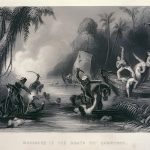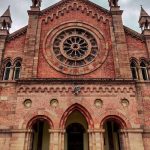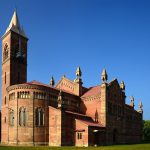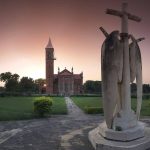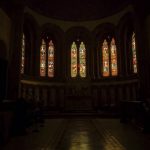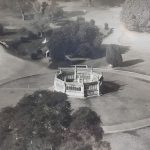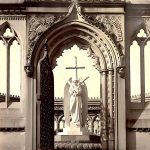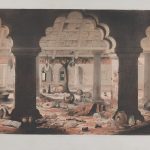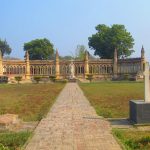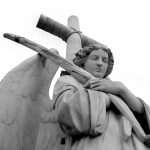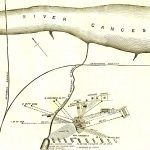The Kanpur Memorial Church previously known as the All Souls Memorial church, is considered the only Church built in India as a memorial of the revolt of 1857, which is 148 years old. The Location is at Albert Lane in the Kanpur cantonment area. It is easily recognisable from a distance because of its grand scale and prominent architectural elements making it impossible to ignore. It was constructed in the Lombardic Gothic style, with a prominent Rose Window dominating the facade. The Church of North India, a united protestant denomination, currently owns this privately.
It originated in memory of the numerous British soldiers who died in Kanpur (formerly Cawnpore) during the 1857 uprising, which the British also call the massacre of 1857. Walter L.B. Granville, an East Bengal Railway architect, designed it. Within the church ground, there is an Angel sculptor and a Gothic screen which was constructed as a memorial of many women and children who were massacred, which was shifted here in the year 1949 after Independence. This Church was supposedly his last work in India after working here for over twenty years. He later then returned to England in 1870.
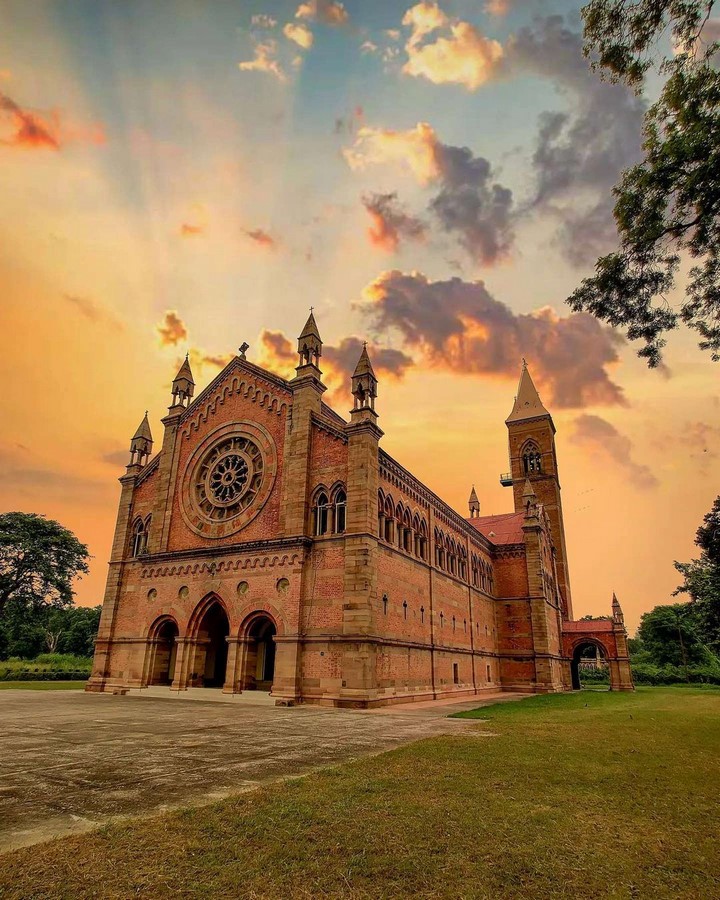
History of Emergence: Massacre Ghat
The Church is standing at one of the most notorious sites of the great uprising of 1857, situated near the entrenchment where General Wheeler with his men tried to hold out against the rebel sepoys of the British Army under the command of Nana Sahib, Raja of Bithoor (a province ten kilometres away from Kanpur). Wheeler and his men were unsuccessful in the act and later betrayed by Nana Sahib, nicknamed ‘The Butcher of Cawnpore’ by the Britishers.
Cawnpore (presently Kanpur) was a Garrison town for the East India Company forces under British General Hugh Wheeler, who had adopted the local custom and was married to an Indian Woman. By June 1857, the Indian rebellion spread to the surrounding towns still, the General was optimistic about his soldiers’ loyalty. Later, General Wheeler along with Nine hundred Britishers took refuge in an entrenchment composed of two barracks surrounded by mud walls located in the south of the city.
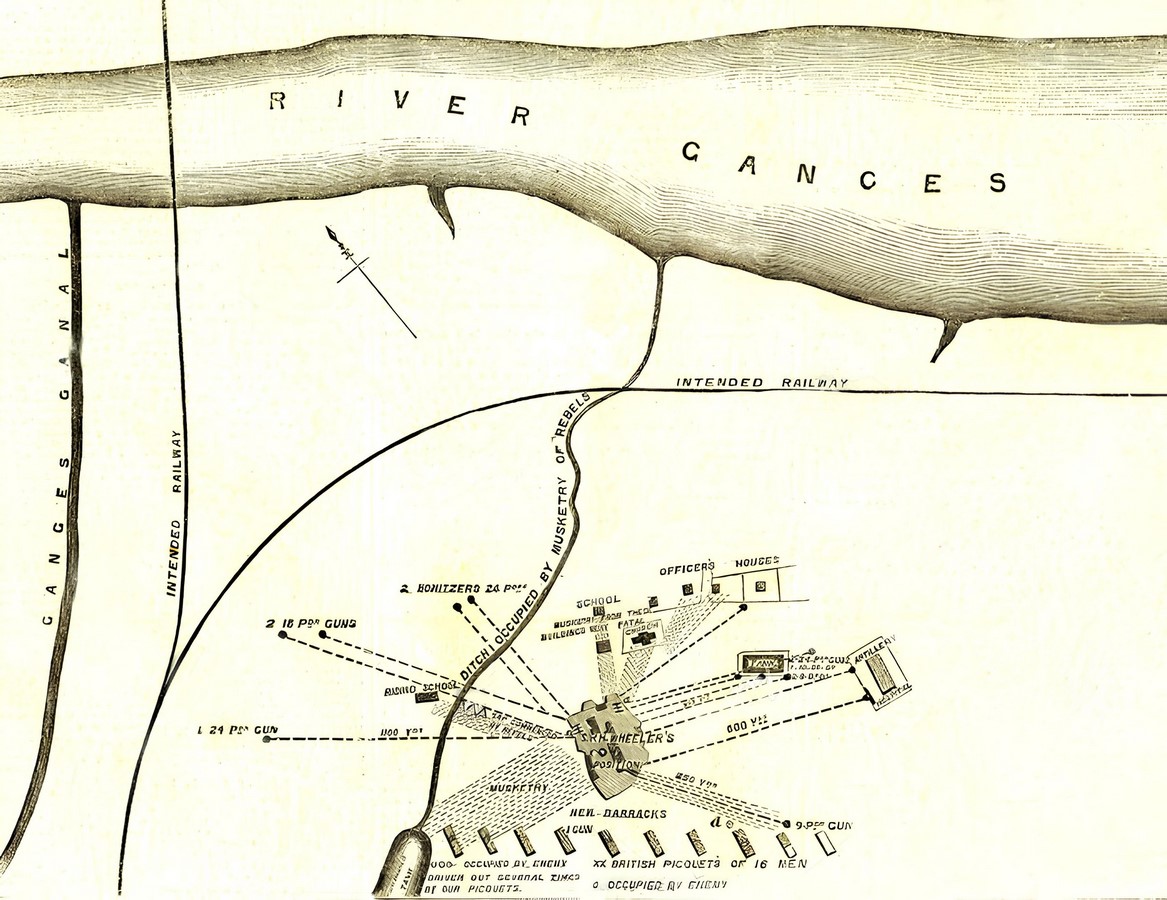
The British remained from June 4 to June 27, surrounded by the rebels who fired upon them night and day. During this time, the Britishers were cut in half while all their supplies for survival ceased and they were on the verge of death. General Wheeler was losing hope but on June 25, the Britishers received an offer from the side of Nana Sahib granting a safe passage to Allahabad by the river on the morning of 27, while providing 60 rounds of ammunition to each soldier, to which General Wheeler agreed.
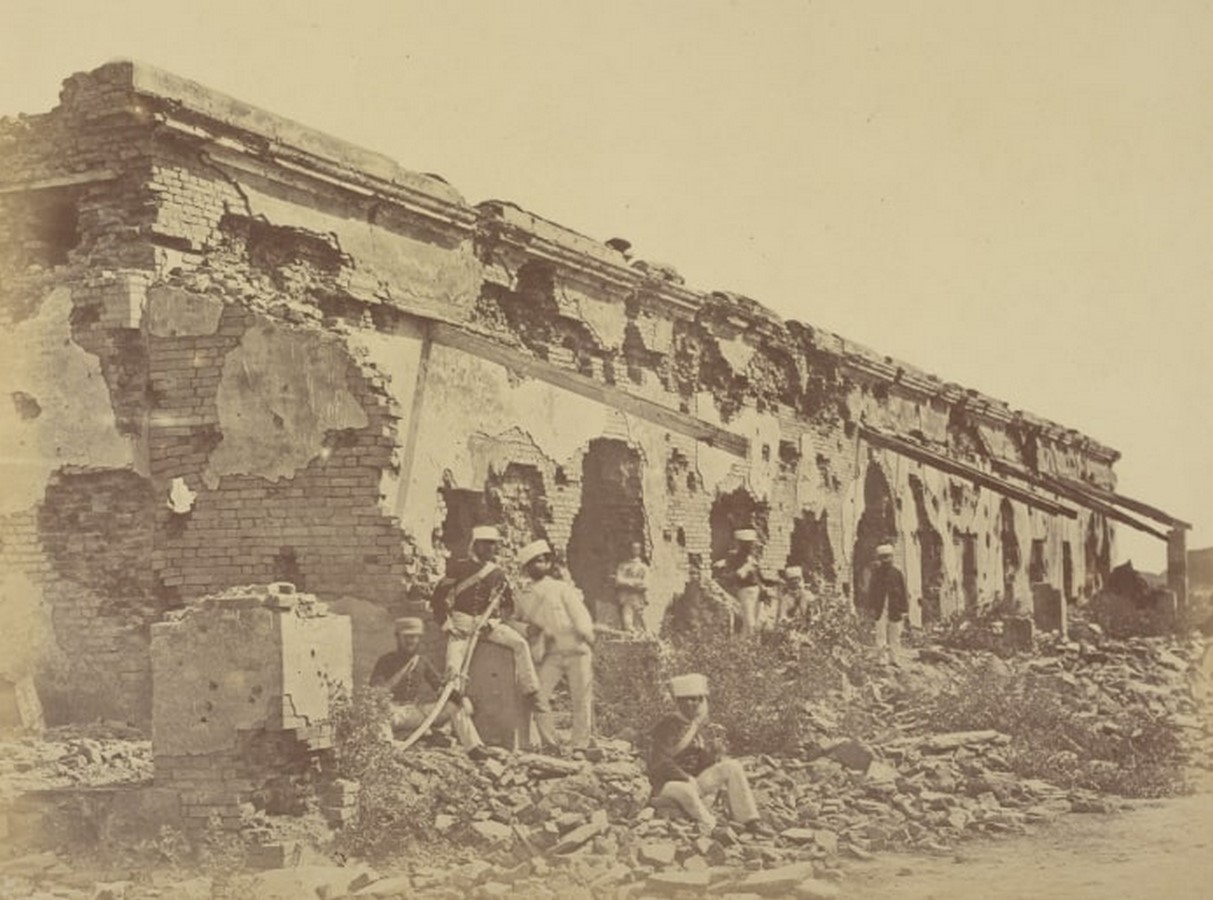
On the morning of June 27, General Wheeler with approximately 450 Britishers came out of entrenchment and proceeded to the Sati Chaura Ghat. After the Britisher boarded the boats, the fishermen set the boats ablaze, and shots were fired from both sides of the Ganges. Finally, the rebels went in to slash and kill those who survived the shooting.130 people were slaughtered; 20 escaped, but the rest were apprehended. The massacre was observed as a public execution watched by 10,000 to 12,000 people. The survivors had their lives taken on the ghat, and the women and children were held captive at Bibighar.
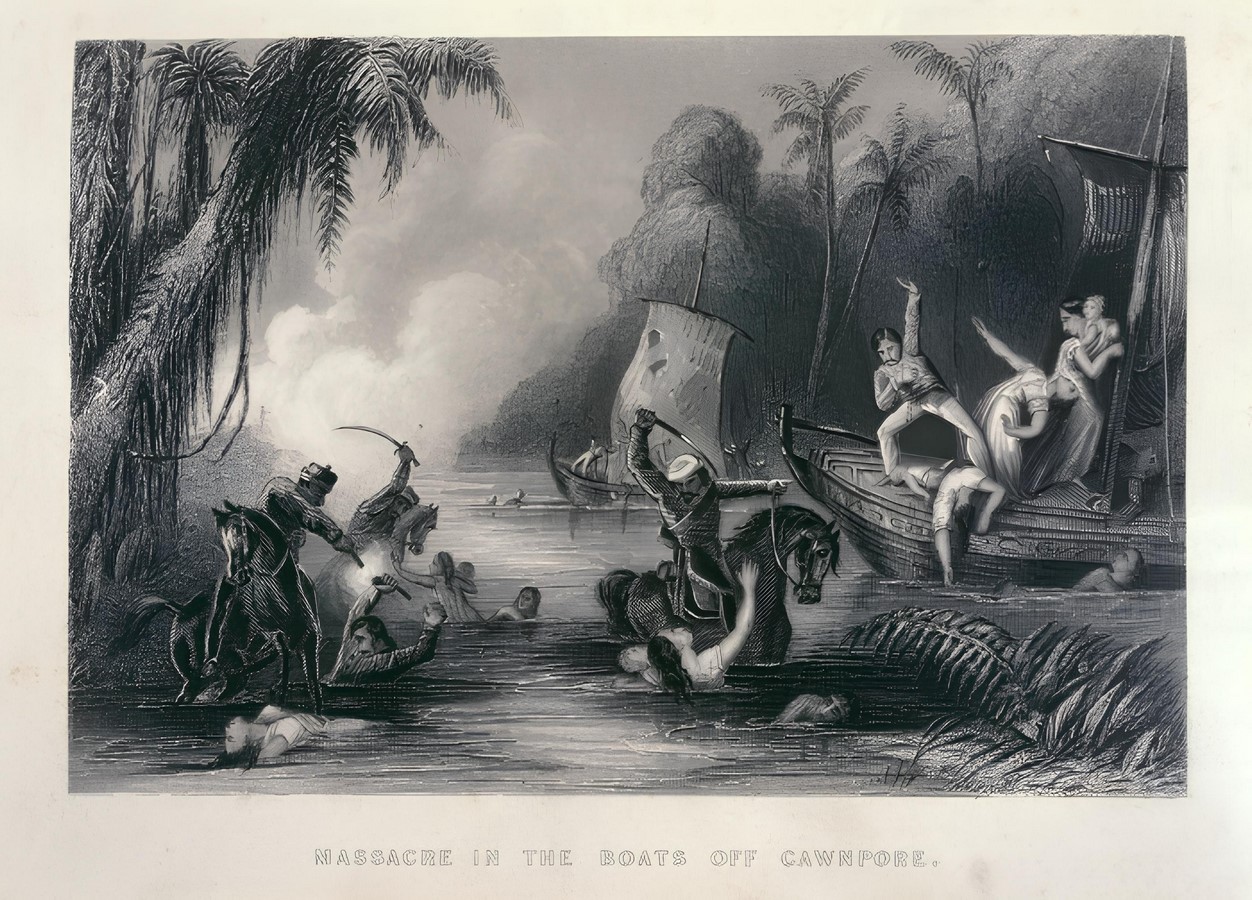
Architecture Elements of the Church
Walter L.B. Granville designed the church, an architect employed by the East Bengal Railway who has been quite popular in the region during the British Raj due to his contributions through his works like the
- The General Post Office, Kolkata (1864-68)
- The High Court, Kolkata (1872)
- The Indian Museum, Kolkata (1875)
The All Souls Church design was indifferent from the Indo-Saracenic High Court or the Neo-classical edifices in Calcutta (currently Kolkata). The Romanesque-styled entrance to the Church was designed with a large crowd in mind, approximately 1500 people. It was speculated at the time; the estimate would have cost £18,000 to build.
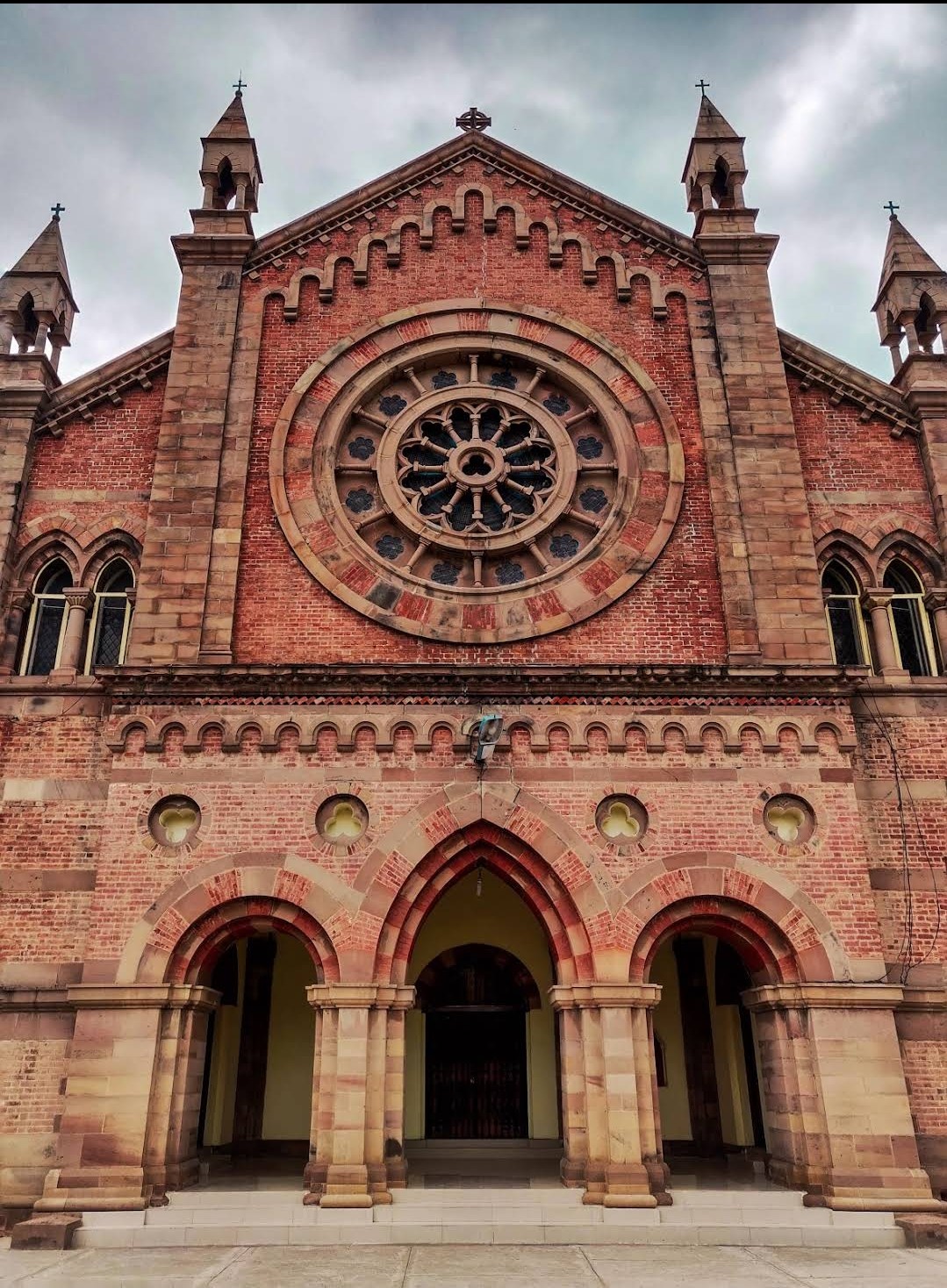
The Church is only accessible by the West side gate, which serves as an entrance to it. It is put together out of Bright Red brick with a polychrome dressing of red sandstone. The western face is symmetrical with appealing details and a grand Rose window with stained glass in the centre with proportion. The entryway is a parvise, with three arched openings with the centre as the pointed arch in conjunction with the two circular arcs. The openings around the building facade are the Pointed arches of windows aligned in a repetitive pattern, accompanied by a series of cornices. The roof is gabled with two levels of eaves.
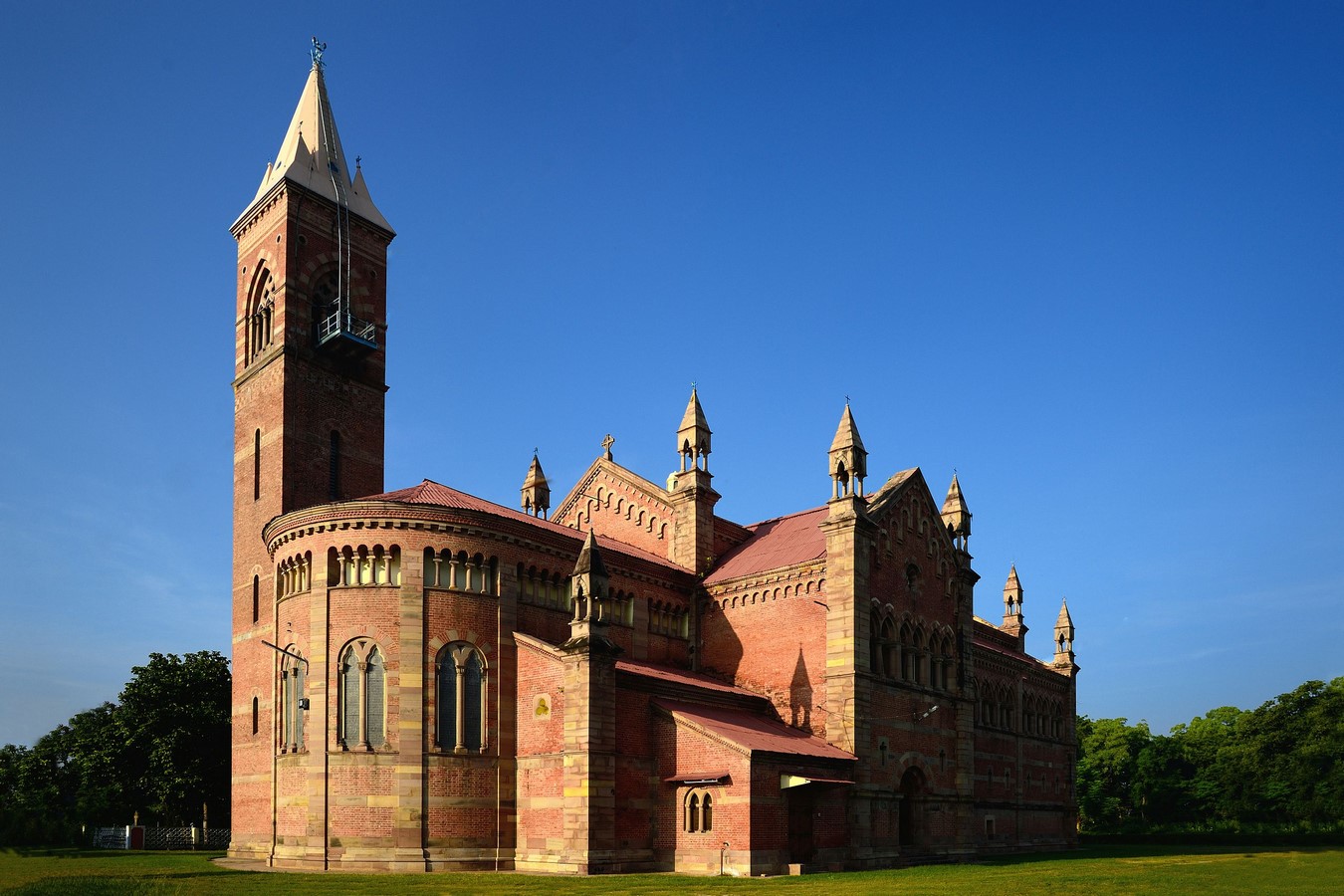
The plan is rectangular a singular aisle on both sides and the central nave between them. The general shape is provided by the Transepts on both sides, which have a facade similar to the west one. There is an Apse with an altar surrounded by long windows with Stained Glass. There is a campanile (Bell Tower) at the back of the southwest portion attached to the Church. The whole structure is recognisable by pointed finials at several junctions and ends. The memorial garden has its enclosure on the eastern side of the Church, separated from the main building by a carved Gateway designed by Henry Yule. The centrepiece is a sculpture of an Angel representing the symbol of peace which was initially situated at Kanpur Memorial Garden (currently Nana Rao Park) and later erected in this compound in 1949 after Independence.
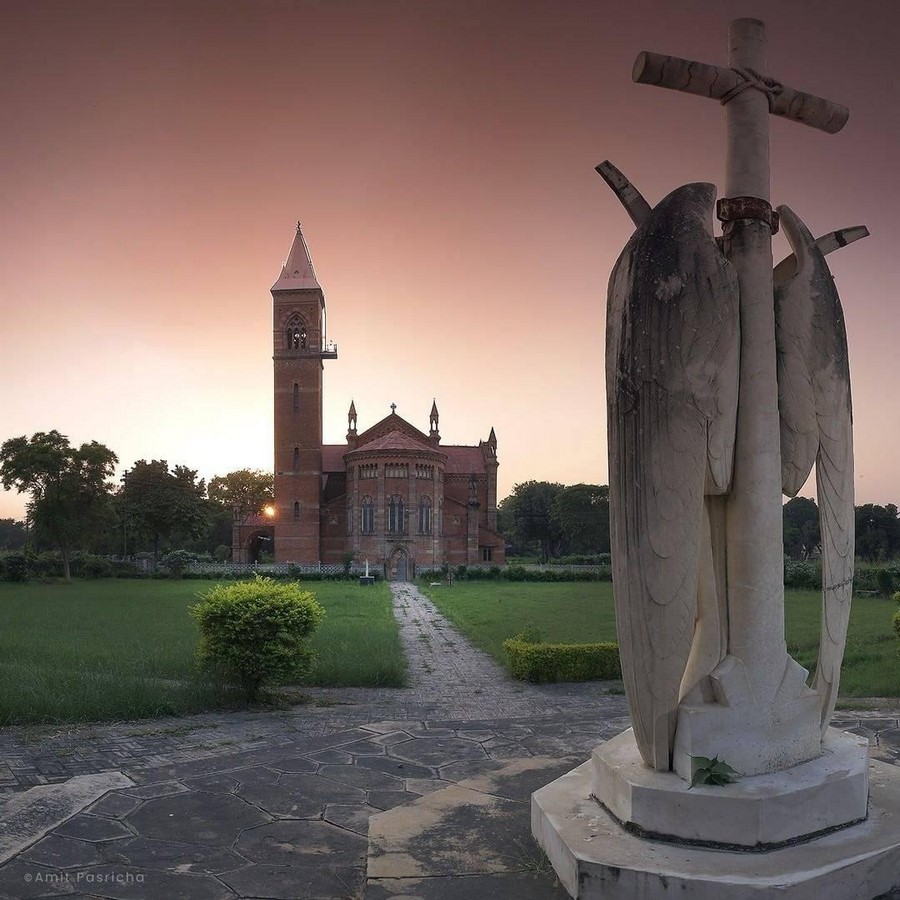
The execution of the interiors was done to pay tribute to the British soldiers who died, the memorial table, epitaphs and monuments. The inside is a ribbed vaulted roof with little to no decoration. The columns present are Corinthian.
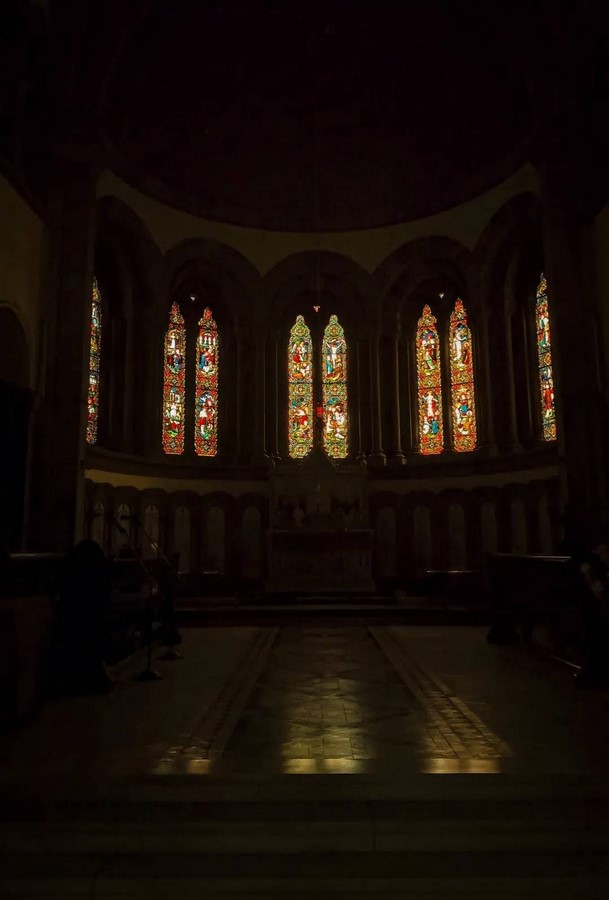
Angel of Peace: The Story of Bibighar Massacre
The angel sculpture at the memorial garden was sculpted by Baron Carlo Marochetti, an Italian-born French sculptor who majorly worked in France, Italy and Britain. He was commissioned for the work by Governor General Lord Canning, Catherine Canning and her sister Louisa Anne were the ones who proposed the idea of the Sculpture and the Kanpur Memorial Garden (Currently Nana Rao Park) to pay tribute to martyrs, along with Colonel Sir Henry Yule for the execution of the whole project.
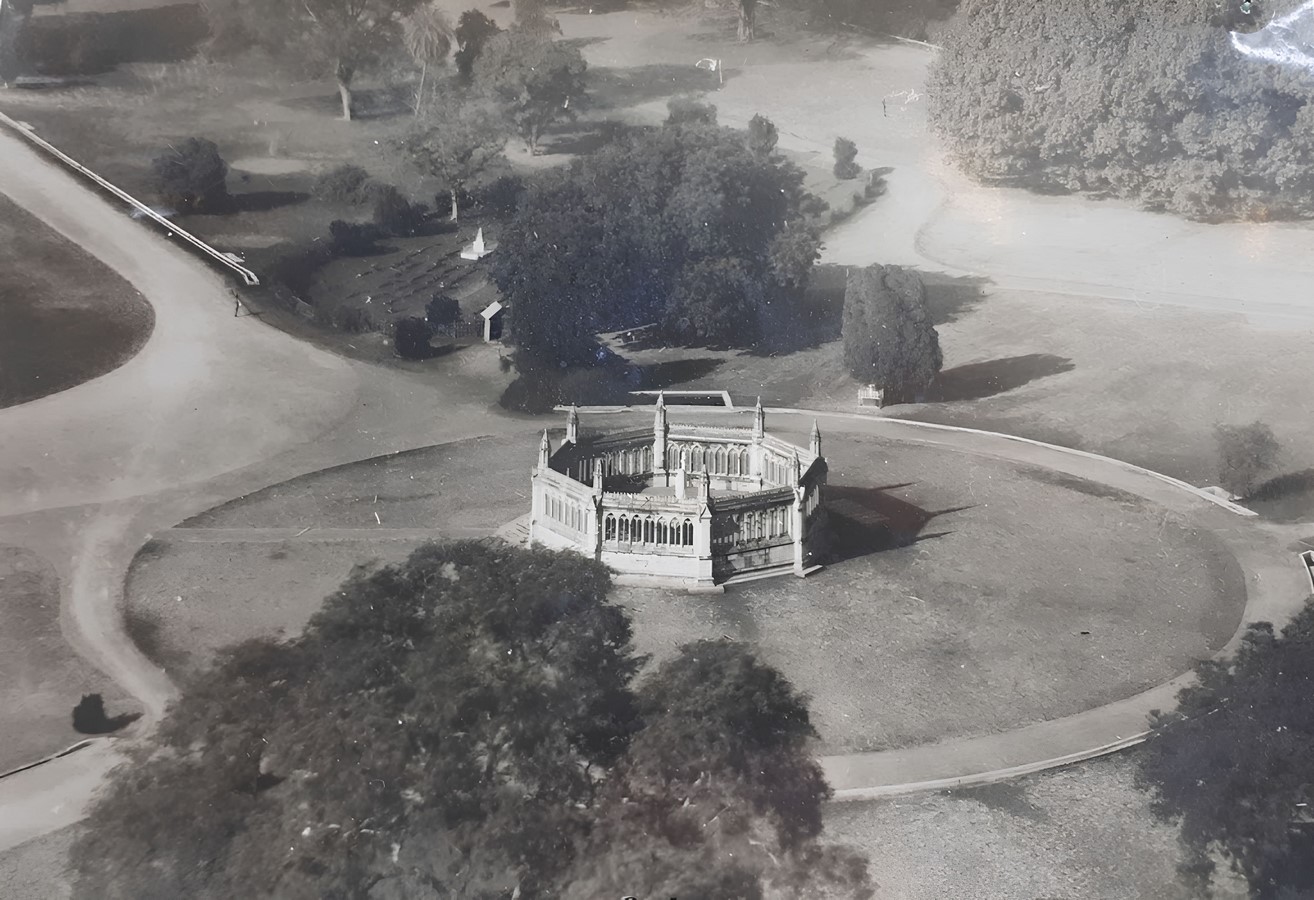
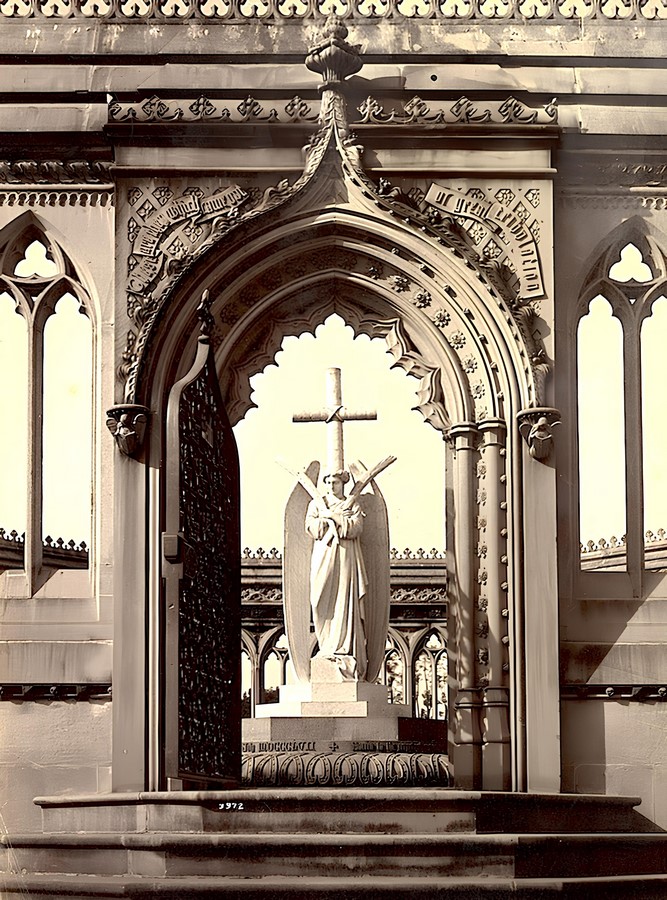
The Bibighar massacre occurred after the captives left after the Sati Chaura Ghat were kept in a Bibighar belonged to Sir George Parker, magistrate of Cawnpore at the time. Throughout the duration, they were in the poorest conditions with diseases and deaths in a small room. On July 15, upon hearing about the Kanpur rebel uprising, Gen. Henry Havelock advanced towards Cawnpore from Allahabad defeating the rebel soldiers on the way, Indian rebel leaders sought safe places in Kanpur. On July 16, 73 women and 124 children were killed by butchers with cleavers after the sepoys refused. There were survivors, but they were thrown in the dried well beneath the corpses the next morning.
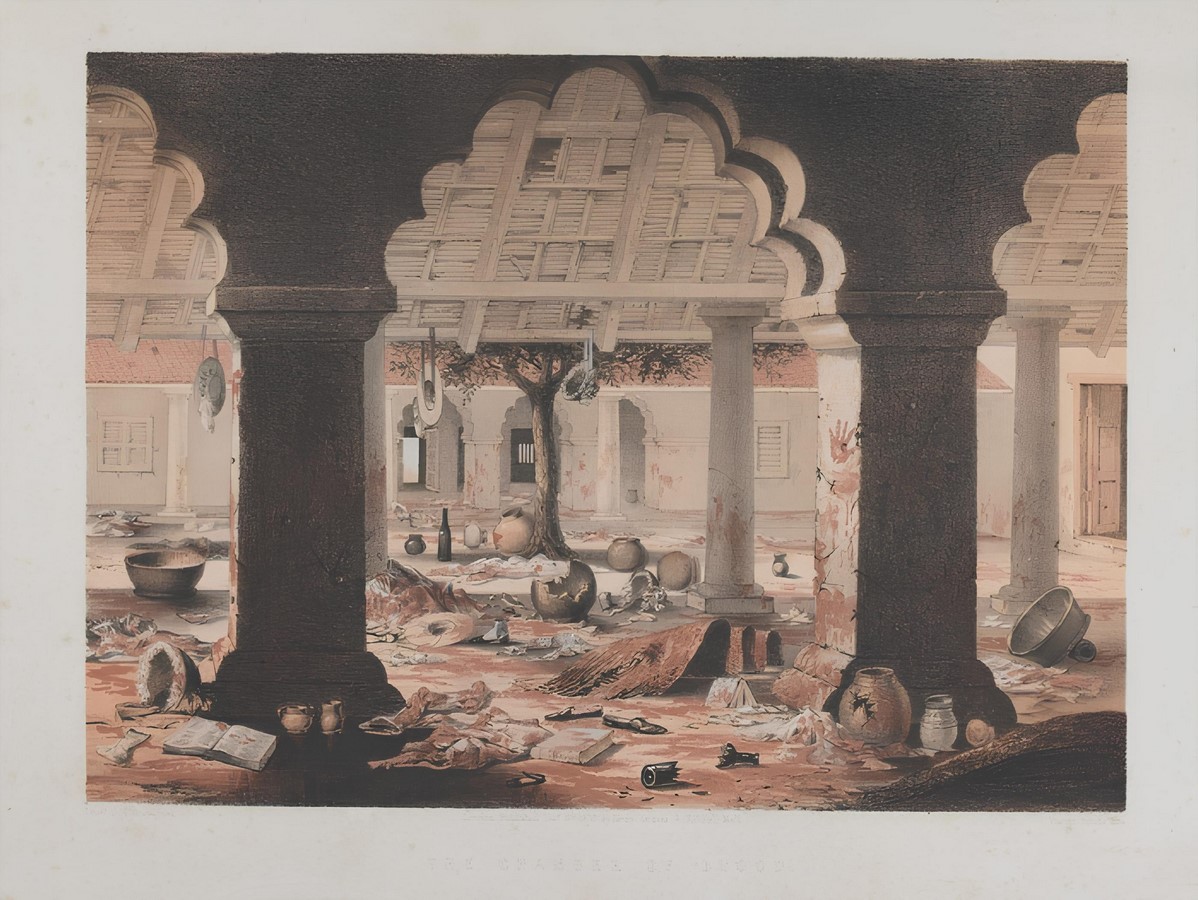
Upon reaching there, Gen. Henry Havelock encountered the scene and ordered soldiers to clean the walls of Bibighar and later destroy it. Earlier, the Cross was erected near the well, later replaced by the Angel Sculpture, designed by Catherine Canning and her sister. After changes, implemented by the sculptor Baron Marochetti, it was built along with the Gothic screen by Colonel Sir Henry Yule and C.B. Thornhill, commissioner and superintendent architect of Allahabad. A cost of £30,000 for the Kanpur Memorial Park, was imposed on the people of Cawnpore for not coming as an aid for the captives.
This memorial ground was sacred, and Indians were not allowed within the compound. The Angel Sculpture was more visited by Europeans in the third half of the 1900s than the Taj Mahal, as seen in every journal and travel book. On the eve of Independence, the Kanpur mob destroyed the sculpture and screen, and in 1949, a bust of Tantya Tope was placed over the well, and the angel sculpture and screens were moved to the Church’s memorial grounds.
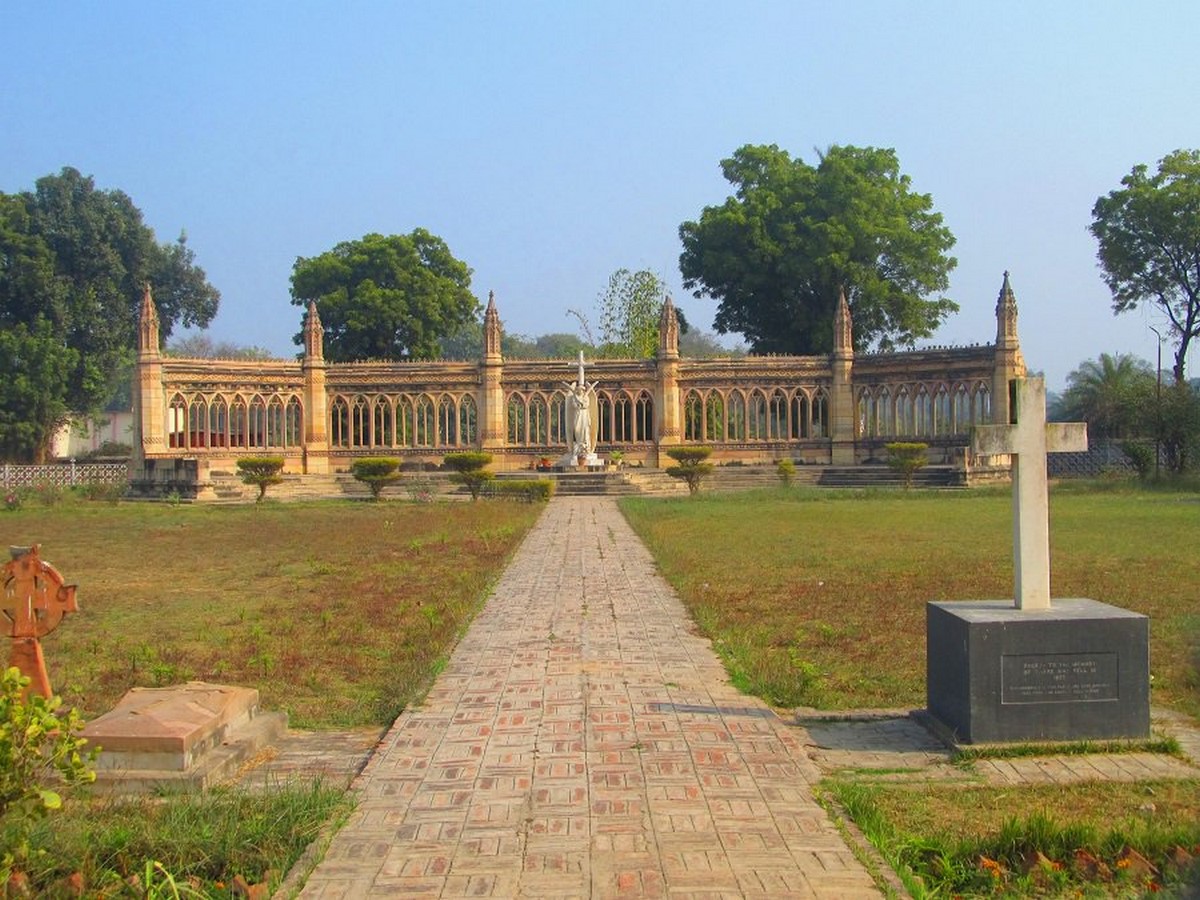
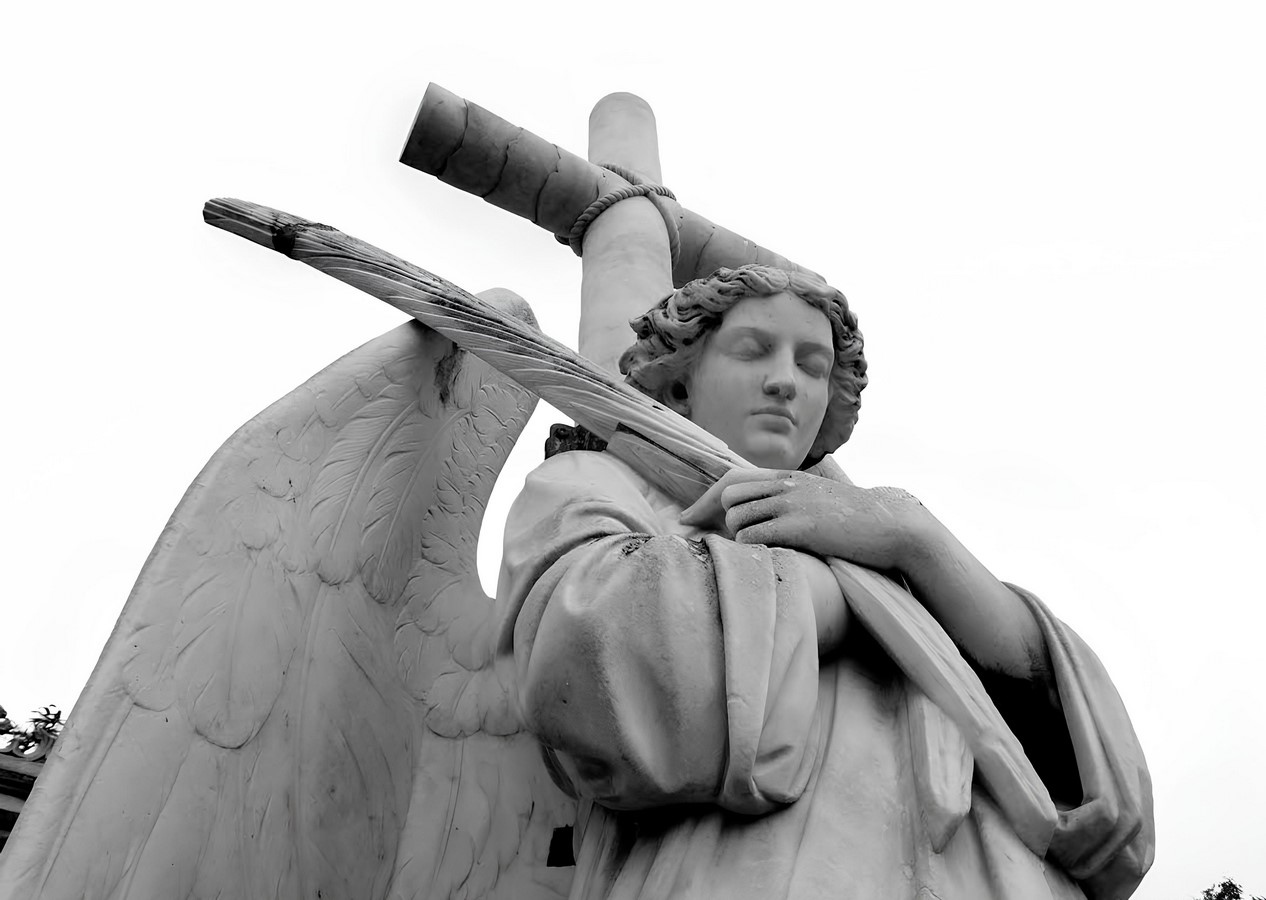
Kanpur Memorial Church is so significant on its own and the actual story behind its emergence is the reason to visit the place. It holds a great history on its shoulders and a considerable legacy. Architecture is just a part of it which makes the Church a mirror of the unseen historic era of the City. But all in vain as it is clear that the church is an underrated structure in the great sea of the growing city of Kanpur.
Reference List:
- Banerjee, J. (2014). Walter Long Bozzi Granville (1819-74). [online] victorianweb.org. Available at: https://victorianweb.org/art/architecture/granville/bio.html [Accessed 21 Jun. 2023].
- Banerjee, J. (2015a). ‘An Icon of Empire. The Angel at the Cawnpore Memorial,’ by Baron Marochetti (1805-1867). [online] victorianweb.org. Available at: https://victorianweb.org/sculpture/marochetti/30.html [Accessed 21 Jun. 2023].
- Banerjee, J. (2015b). All Souls Memorial Church, Cawnpore, by Walter L. B. Granville (1819-1874). [online] victorianweb.org. Available at: https://victorianweb.org/art/architecture/granville/4.html [Accessed 21 Jun. 2023].
- Dubey, A. (2016). The Kanpur Memorial Church. [online] Google Images. Available at: https://www.google.com/maps/contrib/111003616511468830534/photos/@26.4500739,80.3689968,3a,75y,90t/data=!3m7!1e2!3m5!1sAF1QipMXzCfvW4UyNxXnYps25IXJehM2-9j9_C7yjvcb!2e10!6shttps:%2F%2Flh5.googleusercontent.com%2Fp%2FAF1QipMXzCfvW4UyNxXnYps25IXJehM2-9j9_C7yjvcb%3Dw365-h262-k-no!7i4541!8i3264!4m3!8m2!3m1!1e1?hl=en-US&entry=ttu [Accessed 23 Jun. 2023].
- Kumar, A. (2018). [online] Twitter. Available at: https://twitter.com/Hiddenheritage/status/958639416943181824/photo/4 [Accessed 23 Jun. 2023].
- Mukherjee, R. (2017). The forgotten brutality of the 1857 Mutiny. [online] Rediff. Available at: https://www.rediff.com/news/special/the-forgotten-brutality-of-the-1857-mutiny/20170814.htm [Accessed 22 Jun. 2023].
- Pasricha, A. (2021). India Lost & Found by Amit Pasricha . [online] www.facebook.com. Available at: https://www.facebook.com/IndiaLostFound/photos/a.861961803987112/1898429530340329/?paipv=0&eav=AfaseJdz9yTohqSGnWAdVGeshcwO1A7wHJJqzb1oQ0xR3ZXjcZ6PssUpH4ddyO4AbGE&_rdr [Accessed 22 Jun. 2023].
- Shepherd, G.H. (2016). Guava Gardens: All Souls Church, Cawnpore. [online] Guava gardens. Available at: https://guavagardens.blogspot.com/2016/07/all-souls-church-cawnpore.html [Accessed 22 Jun. 2023].
- Srivastava, M. (2022). The Kanpur Memorial Church. [online] Google Images. Available at: https://www.google.com/maps/place/The+Kanpur+Memorial+Church/@26.4500739,80.3689968,3a,75y,90t/data=!3m7!1e2!3m5!1sAF1QipMvY–yFrwy6GlruZtvxmdyP-FScRtl560HYYTQ!2e10!6shttps:%2F%2Flh5.googleusercontent.com%2Fp%2FAF1QipMvY–yFrwy6GlruZtvxmdyP-FScRtl560HYYTQ%3Dw150-h150-k-no-p!7i1080!8i1920!4m8!3m7!1s0x399c40b452529675:0x22a6f89e192728af!8m2!3d26.4500739!4d80.3689968!9m1!1b1!16s%2Fm%2F09rs6nt?hl=en-US&entry=ttu [Accessed 23 Jun. 2023].
- The J. Paul Getty Museum Collection. (n.d.). Cawnpore; The Memorial Well, from the Inside (The J. Paul Getty Museum Collection). [online] Available at: https://www.getty.edu/art/collection/object/109A7E [Accessed 21 Jun. 2023].
- Tornosindia.com. (2019). The Revolt of Cawnpore (Kanpur) & The Massacre of 1857 «Tornos India. [online] Available at: https://www.tornosindia.com/the-revolt-of-kanpur/ [Accessed 21 Jun. 2023].
- Verma, V. (2019). The Kanpur Memorial Church. [online] Google Images. Available at: https://www.google.com/maps/reviews/@0,0,0a,75y,90t/data=!3m8!1e2!3m6!1sAF1QipPjubUanHIE_MGH9Qh1l_9-ARbj7dUe0-2Ivmf-!2e10!3e12!6shttps:%2F%2Flh5.googleusercontent.com%2Fp%2FAF1QipPjubUanHIE_MGH9Qh1l_9-ARbj7dUe0-2Ivmf-%3Dw150-h150-k-no-p!7i3399!8i4608!4m6!14m5!1m4!2m3!1sChZDSUhNMG9nS0VJQ0FnSURrN2VmMWNnEAE!2m1!1s0x0:0x22a6f89e192728af?hl=en-US&entry=ttu [Accessed 23 Jun. 2023].
- Wikipedia. (2023a). Carlo Marochetti. [online] Available at: https://en.wikipedia.org/wiki/Carlo_Marochetti [Accessed 21 Jun. 2023].
- Wikipedia. (2023b). Kanpur Memorial Church. [online] Available at: https://en.wikipedia.org/wiki/Kanpur_Memorial_Church [Accessed 23 Jun. 2023].
- www.tornosindia.com. (2020). Murders or Slaughter – Bibighar Massacre, Cawnpore – 1857 «Tornos India. [online] Available at: https://www.tornosindia.com/murders-or-slaughter-bibighar-massacre-cawnpore-1857/ [Accessed 21 Jun. 2023].
- www.tornosindia.com. (2022). Wheeler’s Entrenchment – Fort of Despair «Tornos India. [online] Available at: https://www.tornosindia.com/wheelers-entrenchment-fort-of-despair/ [Accessed 22 Jun. 2023].
- Yadav, A. (n.d.). Instagram. [online] www.instagram.com. Available at: https://www.instagram.com/p/CTlwf4evfOI/?igshid=MWQ1ZGUxMzBkMA== [Accessed 22 Jun. 2023].










